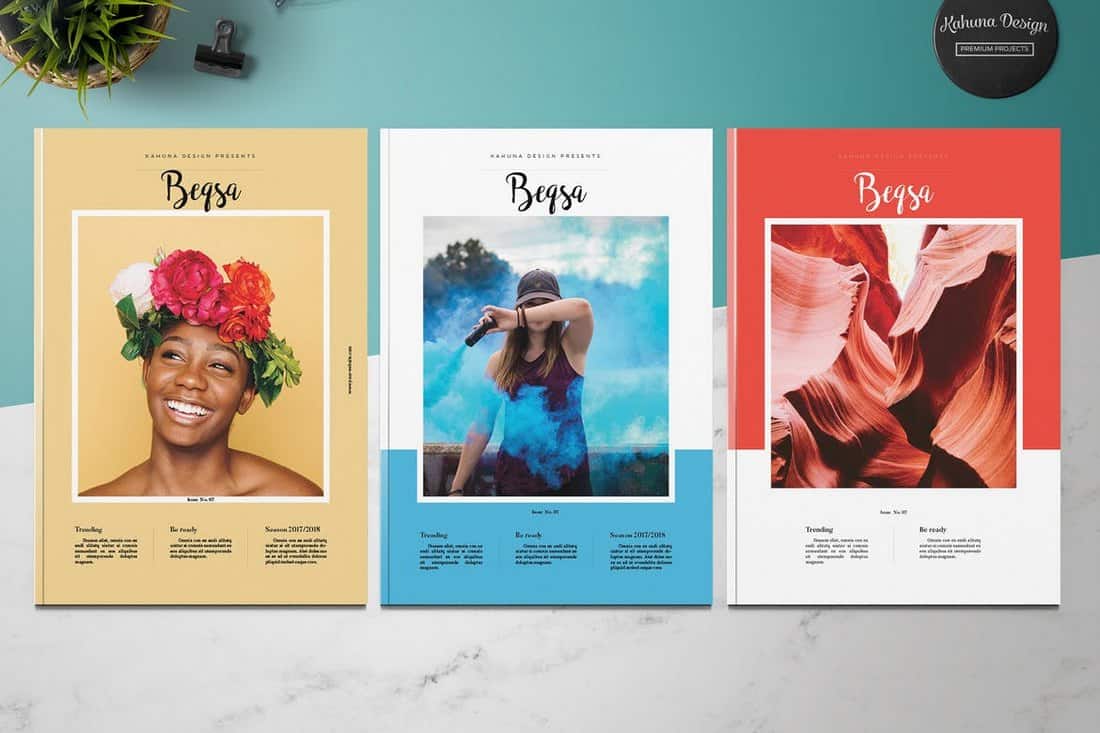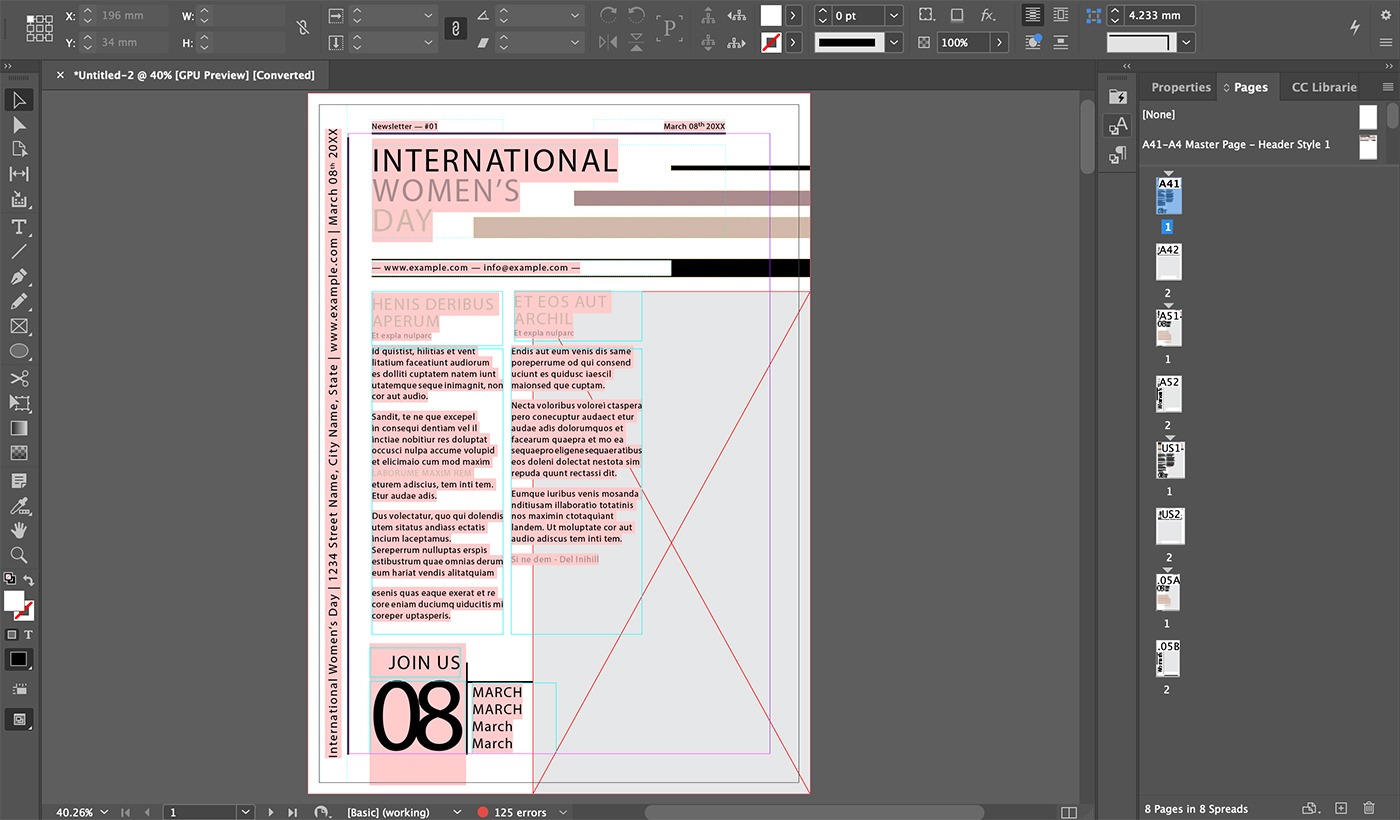What Is InDesign (+ What Is InDesign Used For?)
InDesign is a powerful desktop publishing software developed by Adobe Systems. It is widely used by graphic designers, publishers, and marketing professionals to create a range of print and digital media, such as magazines, newspapers, books, brochures, flyers, and more.
Adobe InDesign is part of the Adobe Creative Cloud suite and is a versatile layout and page design software that enables users to create visually appealing designs for both print and digital media.
In this article, we will explore what InDesign is, its primary features, and five common use cases.
What is InDesign?
Adobe InDesign is an industry-standard tool for creating and publishing high-quality content, offering a wide range of features and tools that facilitate precise control over typography, layout, color, and images.

Common Use Cases for InDesign
InDesign is used across a variety of industries and professions for creating and publishing diverse types of content. Here are five common use cases:
1. Magazines and Newspapers
InDesign is a popular choice for creating both print and digital magazines and newspapers, thanks to its robust text and image handling capabilities. It offers advanced typography features and seamless integration with other Adobe software, such as Photoshop and Illustrator, making it easy to produce engaging and visually appealing layouts.

2. Books and eBooks
Authors, publishers, and designers use InDesign to create books and eBooks with professional-grade typography, layout, and design. The software allows for efficient management of long, complex documents with features like Master Pages, Paragraph and Character Styles, and automatic page numbering.
Its digital publishing capabilities also enable users to create interactive eBooks with multimedia content and responsive layouts.
3. Brochures and Flyers
InDesign is ideal for designing eye-catching brochures, flyers, and other promotional materials. Its precise layout and design tools, combined with the ability to import high-quality images and graphics, make it easy to produce professional-looking marketing collateral. Users can create custom designs or use pre-built templates to quickly develop materials that effectively showcase their brand.

4. Business Stationery
Businesses of all sizes use InDesign to create a wide range of stationery items, such as letterheads, business cards, envelopes, and forms. The software’s precise typographic control and customization options make it easy to develop a consistent and professional brand identity across various stationery items.
5. Interactive PDFs and Digital Documents
InDesign is not limited to print media; it is also a powerful tool for creating interactive digital documents, such as PDFs, presentations, and portfolios. Users can incorporate multimedia elements like video, audio, and animations to make their digital documents engaging and interactive.
The software’s exporting capabilities also ensure that documents are optimized for various digital platforms.
InDesign in Comparison to Illustrator and Photoshop
While InDesign, Illustrator, and Photoshop are all part of the Adobe Creative Cloud suite, each software serves a distinct purpose. InDesign is primarily focused on layout and design for print and digital media, while Illustrator is a vector graphics editor for creating logos, icons, and illustrations, and Photoshop is a raster image editor for photo manipulation and editing.
InDesign excels in handling multi-page documents with complex layouts and typography, making it the go-to choice for publishing and layout design projects. However, it is often used in conjunction with Illustrator and Photoshop to leverage their respective strengths in vector and raster image editing.
Getting Started with InDesign: Tips for Beginners
If you are new to InDesign, here are some tips to help you get started:
1. Learn the Interface
Familiarize yourself with the InDesign workspace, panels, and tools. Spend some time exploring the toolbar, menus, and panel options to understand their functions and how they can aid in your design process.

2. Utilize Master Pages
Master Pages are a powerful feature in InDesign that allows you to create consistent layouts across multiple pages. By setting up elements like headers, footers, and page numbers on a Master Page, you can apply these elements to other pages in your document, saving time and ensuring consistency.
3. Use Paragraph and Character Styles
InDesign’s Paragraph and Character Styles are essential for managing typography and formatting throughout your document. Create and apply styles to maintain a consistent look and feel across your text elements, and easily make global changes by updating the style settings.
4. Embrace Layers
Organize your document by using layers to separate different elements, such as text, images, and background elements. This will make it easier to edit and manage your design as it becomes more complex.
5. Practice with Templates
Adobe offers a range of InDesign templates for various projects, which can be a great starting point for beginners. Use these templates to learn how experienced designers structure their documents, and to gain inspiration for your own projects.
In summary, Adobe InDesign is an indispensable tool for professionals who need to create visually appealing and well-structured print and digital media. Its diverse range of use cases and its ability to work seamlessly with other Adobe software make it a must-have for graphic designers, publishers, and marketing professionals. By understanding its features and capabilities, and with practice, you’ll be well on your way to mastering InDesign and creating stunning designs for your projects.